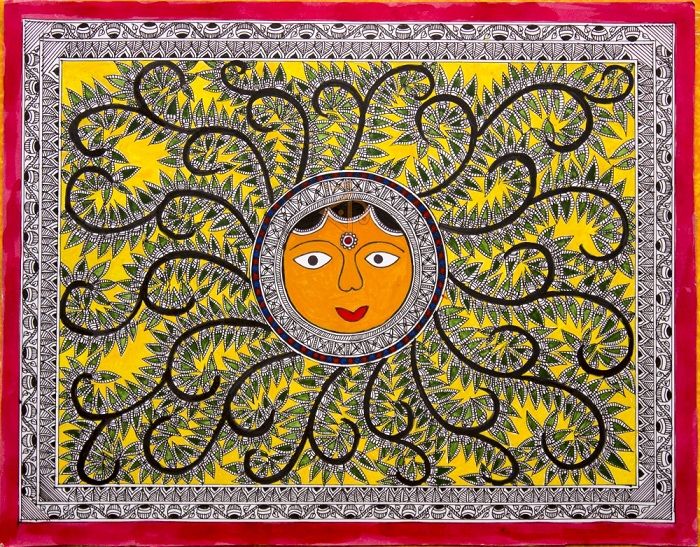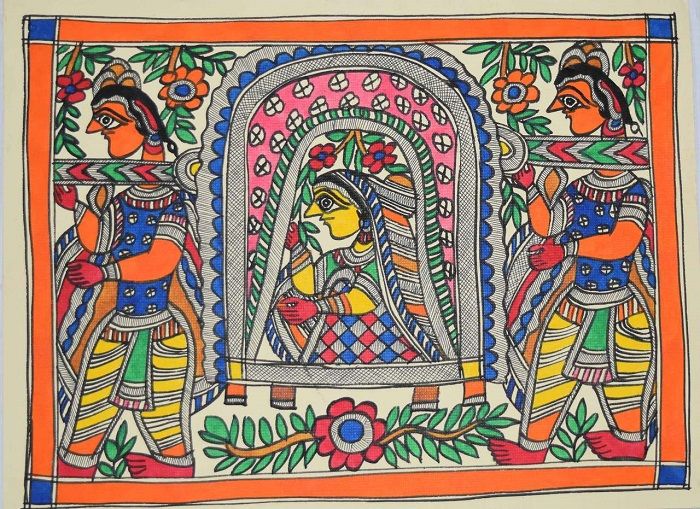Folk Arts of India: Madhubani

Madhubani Art form, also referred to as the Mithila art form is a style of Indian paintings that finds its roots in the northern Bihar region of India and the lower regions of Nepal. The Madhubani art form is remarked and characterized by the complex geometrical patterns that these paintings employ to represent ritualistic content of occasions such as festivals etc.
Madhubani paintings find their origin in the Mithila region of Bihar. The tale of Madhubani paintings goes back to the times of Ramayana where it is said that when King Janaka, the father of Sita, had asked the painters of his kingdom to create paintings for his daughter’s wedding, the art form came into existence. From there the knowledge has been passed down to generations and the paintings have beautified the homes of people illustrating thoughts, hopes and dreams.

In its initial phases, the Madhubani art form was practised by different strata or sects of peoples which led to the categorization of the art form into five categories viz. Tantrik, Bharni, Godna, Katchni, Khobar. However, with the dissolution of sect and caste-based lines in contemporary times, these styles of Madhubani art form too have fused together. The theme of the Madhubani paintings is heavily focused on the Hindu deities like Krishna, Rama, Durga etc along with heavenly bodies like the sun and the moon. The paintings also illustrated the scenes of the royal courts and social events like weddings and festivals.

The Madhubani paintings are the most famous for their use of complex geometrical figures complemented with the simplicity and the use of brush and the colours often sourced from natural resources. The paintings are predominantly made using powdered rice, along with colours that were extracted from pollen, pigments, turmeric, and leaves and flowers from an array of trees. The empty spaces in the paintings are often filled in with motifs of the flowers, animals and geometrical patterns.
The Madhubani art form is surviving and thriving due to the efforts of the artist who work day in day out to make the world aware of the Madhubani art form. Some notable artists in the domain are Sita Devi, Ganga Devi, Mahasundari Devi and Bharati Dyal. The Madhubani art form is kept alive by institutions such as Kalakriti in Darbhanga, Benipatti in the Madhubani district.
The Madhubani art form is the storehouse of aspiration of the common people illustrating everything from their beliefs to hopes and thoughts.
Independent Project by Abhinav Sharma
Guide ⇒ Prof. Manohar Khushalani
References :











